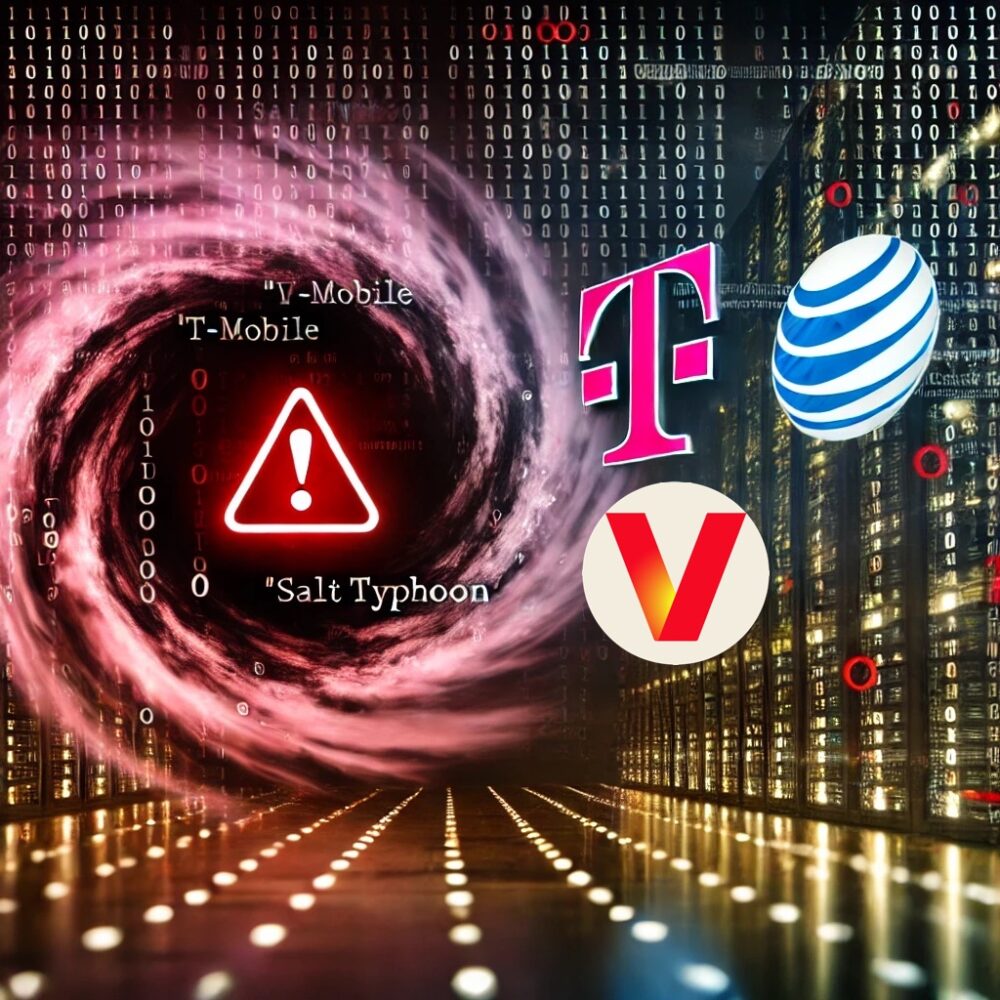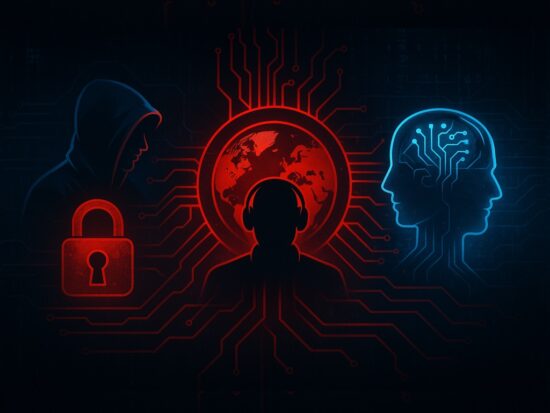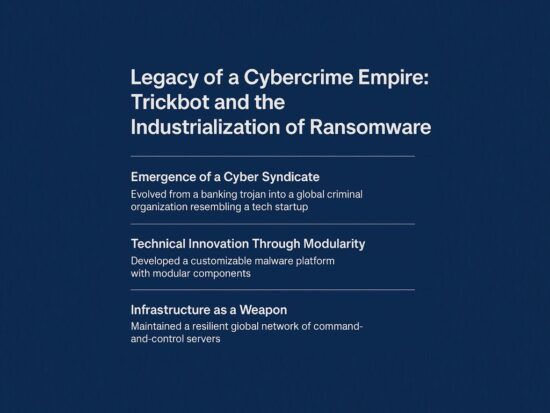In the rapidly evolving landscape of digital threats, the recent Salt Typhoon incident serves as a stark reminder of the vulnerabilities inherent in our telecommunications infrastructure. The breach, attributed to Chinese state-sponsored hackers, compromised key U.S. telecom giants such as AT&T, Verizon, and Lumen Technologies. The scale and sophistication of the attack not only threaten national security but also underscore the urgent need for organizations—both public and private—to prioritize cybersecurity and adopt proactive, preventive measures.
This article provides an in-depth look at how the Salt Typhoon breach unfolded, the extent of its damage, and how similar attacks could potentially unfold in the future. It also highlights why corporate leaders and university professionals must take immediate steps to educate themselves and their employees on preventing such breaches. Ultimately, the incident calls for widespread adoption of encrypted communication technologies and better cybersecurity protocols across all sectors.
How the Salt Typhoon Attack Unfolded
The Salt Typhoon breach came to light in late 2023 when U.S. officials confirmed a significant cyberattack had targeted the telecommunications industry. At its core, the hack exploited vulnerabilities in the internal systems of major U.S. telecom companies. These vulnerabilities allowed hackers to gain unauthorized access to highly sensitive data, including call records, live phone calls of specific individuals, and the very systems that assist in wiretapping and complying with law enforcement orders (CALEA—Communications Assistance for Law Enforcement Act).
While many breaches typically aim at stealing personal data or financial information, the Salt Typhoon attack was far more insidious, focused on espionage and surveillance. By intercepting communications and compromising the wiretapping infrastructure, hackers were able to eavesdrop on private conversations and gain access to confidential information.
The attack was not an isolated incident but rather part of a broader campaign of cyber-espionage allegedly orchestrated by Chinese state-sponsored hackers. U.S. cybersecurity experts and intelligence officials quickly recognized the scope of the attack, noting that it represented one of the most significant breaches of intelligence and communication networks in recent history.
Scope of the Damage
The immediate and long-term repercussions of the Salt Typhoon breach are far-reaching. Here are some of the key consequences:
1. Compromised National Security
The attack targeted telecommunication systems critical to U.S. national security. By gaining access to sensitive government communications, hackers could potentially track high-ranking officials, intercept military and diplomatic conversations, and disrupt the flow of confidential information. This compromises not only governmental security but also national defense efforts, making the U.S. more vulnerable to strategic cyberattacks.
2. Loss of Consumer Privacy
The breach also exposed a vast amount of private information about American citizens. Personal communication records, including private calls and text messages, were among the data compromised. This invasion of privacy is particularly concerning in an era when consumers expect their personal information to remain secure. The breach undermines trust in telecommunications companies and raises questions about the effectiveness of existing data protection regulations.
3. Erosion of Public Confidence in Telecom Providers
The telecom giants affected—AT&T, Verizon, and Lumen Technologies—now face significant reputational damage. Consumers are left wondering whether their communications are secure, and businesses are questioning the reliability of telecom services for secure communication. A loss of confidence in these providers could lead to massive customer attrition, not to mention legal challenges, regulatory scrutiny, and financial losses.
4. Economic Impact
The economic consequences of such breaches are not limited to the telecom industry. Financial markets could be affected by the instability created by a loss of trust in critical infrastructure. Additionally, businesses may have to shoulder the costs of increased cybersecurity investments, legal settlements, and remediation measures. Public confidence in digital systems may diminish, potentially stalling growth in sectors that depend on secure telecommunications, such as finance, healthcare, and e-commerce.
Recommendations for Preventive Measures
In light of the Salt Typhoon incident, it is clear that cybersecurity must be a top priority for both private enterprises and public sector organizations. Here are key recommendations for businesses, particularly corporate executives, to ensure their organizations are better prepared to face similar threats:
1. Adopt Encrypted Communication Technologies
In the aftermath of the breach, U.S. officials, including representatives from the FBI, have urged all Americans to adopt encrypted messaging apps such as Signal and WhatsApp to safeguard their communications. For businesses, using end-to-end encrypted communication platforms is no longer a luxury—it’s a necessity. By employing encrypted technologies, companies can ensure the privacy of sensitive communications and protect their clients and employees from surveillance and hacking attempts.
2. Educate Employees About Cyber Hygiene
It’s crucial that organizations invest in cybersecurity education for their employees. This includes regular training on identifying phishing attempts, understanding the importance of password hygiene, and recognizing suspicious activities. Cybersecurity should be integrated into the corporate culture so that every employee becomes a line of defense against potential breaches.
3. Strengthen Internal Security Protocols
Companies must evaluate their internal security measures and ensure that sensitive data is properly segmented and protected. Breaches like Salt Typhoon highlight the importance of strong access controls, robust firewalls, and up-to-date encryption standards. Furthermore, regular cybersecurity audits and penetration testing can help identify and rectify vulnerabilities before they are exploited by hackers.
4. Collaborate with Cybersecurity Experts
Given the complexity of cyber threats, it is essential for organizations to work closely with cybersecurity experts and government agencies. By participating in information-sharing programs and collaborating on threat intelligence, businesses can stay ahead of emerging risks and strengthen their defenses. Cybersecurity is a collective effort, and maintaining an open dialogue with experts and authorities can provide valuable insights into best practices and emerging threats.
5. Develop an Incident Response Plan
No system is entirely impervious to cyberattacks, so it’s critical for organizations to have a well-developed incident response plan. This plan should outline clear steps for detecting, containing, and mitigating an attack, as well as procedures for communicating with stakeholders and regulators. Being prepared for a breach can reduce its impact and minimize recovery time.
A Call to Action for Corporate CEOs and University Professors
The Salt Typhoon attack serves as a powerful reminder that cyber threats are not just technical challenges—they are global security issues that demand immediate action. Corporate leaders and academic professionals must take the lead in fostering a culture of cybersecurity awareness and resilience.
For CEOs, the time to act is now. Educate yourself, educate your employees, and integrate cybersecurity into your organizational strategy. For university professors, it is vital to incorporate cybersecurity education into your curricula, preparing the next generation of professionals to understand, mitigate, and prevent such threats.
In the wake of Salt Typhoon, the question is no longer whether cyberattacks will occur but when they will happen. As leaders, we have a responsibility to be proactive, to safeguard our communications, and to lead by example in building a more secure digital future.
This article, aimed at university professors and corporate CEOs, emphasizes the pressing need for education and action following the Salt Typhoon attack. By fostering a culture of cybersecurity awareness and adopting preventive measures, we can protect our organizations, our citizens, and our nation from the growing threat of cyberattacks.





